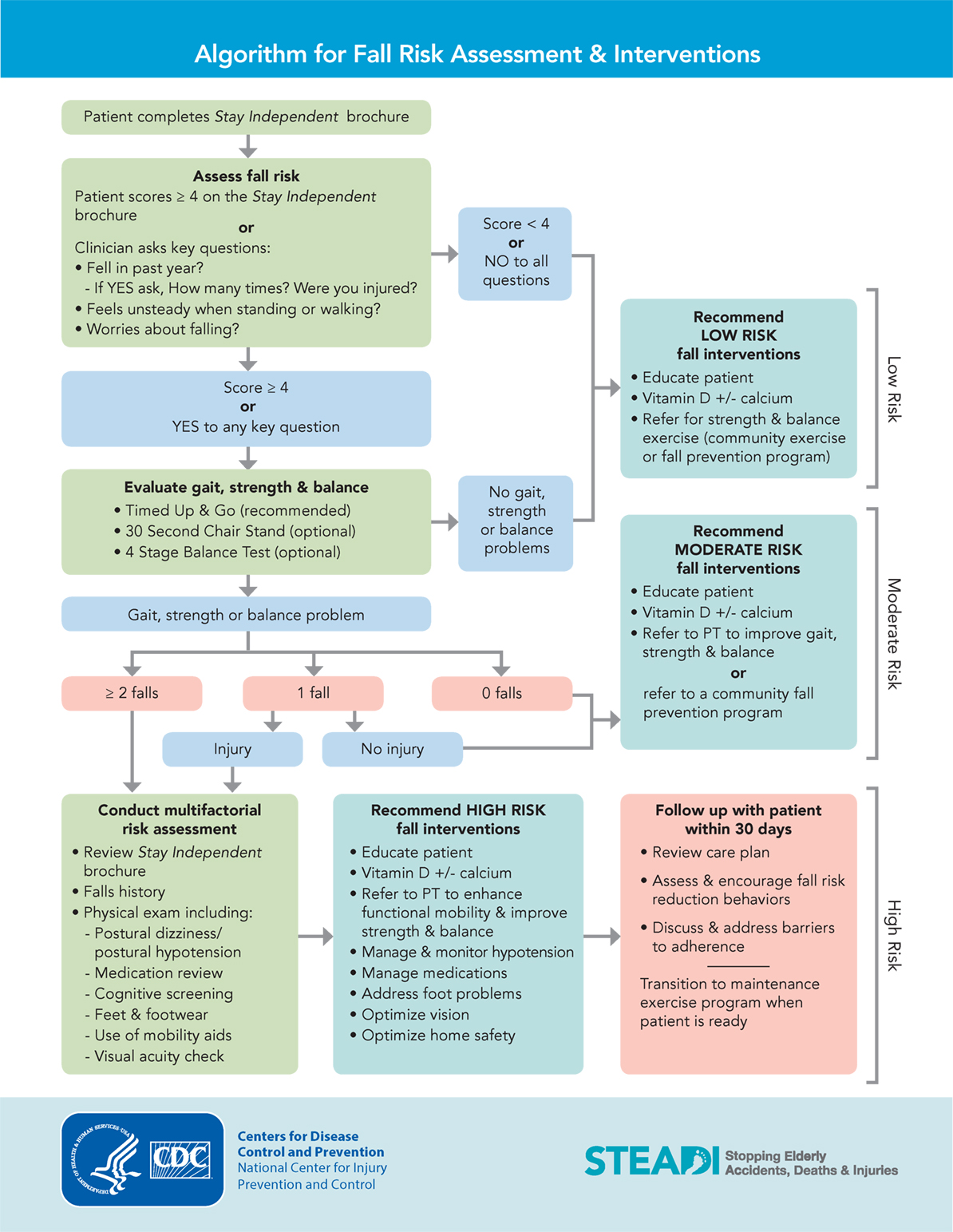The Best Guide To Dementia Fall Risk
The Basic Principles Of Dementia Fall Risk
Table of ContentsA Biased View of Dementia Fall RiskThe 20-Second Trick For Dementia Fall RiskThe Greatest Guide To Dementia Fall RiskDementia Fall Risk Fundamentals ExplainedSee This Report about Dementia Fall Risk
The FRAT has 3 sections: fall threat standing, danger variable list, and action strategy. A Loss Threat Status includes data concerning history of recent falls, medications, psychological and cognitive condition of the individual - Dementia Fall Risk.If the individual ratings on a threat factor, the matching number of factors are counted to the patient's loss risk score in the box to the far. If an individual's loss risk score totals 5 or greater, the person goes to high danger for falls. If the client ratings just four factors or lower, they are still at some danger of dropping, and the nurse must utilize their ideal scientific evaluation to handle all loss risk factors as part of an alternative care plan.
These conventional methods, in basic, assist establish a safe environment that decreases unintentional drops and delineates core preventive procedures for all clients. Signs are crucial for people at danger for drops.
An Unbiased View of Dementia Fall Risk
For instance, wristbands need to consist of the individual's last and very first name, date of birth, and NHS number in the UK. Information ought to be printed/written in black versus a white background. Just red color ought to be made use of to signal unique client status. These suggestions are constant with current growths in patient identification (Sevdalis et al., 2009).
Items that are too much might call for the individual to connect or ambulate unnecessarily and can potentially be a danger or contribute to drops. Assists avoid the patient from heading out of bed with no support. Registered nurses react to fallers' phone call lights extra quickly than they do to lights initiated by non-fallers.
Aesthetic disability can significantly trigger drops. Hip pads, when worn correctly, might lower a hip crack when fall happens. Maintaining the beds closer to the floor lowers the danger of falls and significant injury. Placing the mattress on the floor dramatically minimizes autumn risk in some health care setups. Low beds are made to lessen the distance a patient falls after moving out of bed.
9 Easy Facts About Dementia Fall Risk Explained
Patients that are tall and with weak leg muscles that attempt to rest on the bed from a standing placement are likely to fall onto the bed because it's as well reduced for them to reduce themselves safely. Also, if a tall patient efforts to rise from a low bed without help, the client is most likely to drop back down onto the bed or miss out on the bed and drop onto the flooring.
They're made to advertise timely rescue, not to protect against falls from bed. Aside from bed alarm systems, boosted guidance for risky people also may help protect against drops.

Clients with a shuffling stride rise autumn chances considerably. To lower autumn danger, shoes need to be with a little to no heel, thin soles with slip-resistant step, and sustain the ankles.
7 Easy Facts About Dementia Fall Risk Described
In a research study, homes with adequate lighting record fewer drops (Ramulu et al., 2021). Renovation in lights at home might lower autumn rates in about his older grownups.

Caretakers work for ensuring a safe, safeguarded, and secure environment. However, research studies demonstrated very low-certainty evidence that caretakers minimize loss threat in intense care health centers and only moderate-certainty that options like video clip monitoring can lower sitter usage without boosting autumn threat, suggesting that sitters are not as beneficial as originally thought (Greely et al., 2020).
Excitement About Dementia Fall Risk

Boosted physical fitness minimizes the threat for falls and limits injury that is suffered when autumn transpires. Land and informative post water-based exercise programs may be similarly advantageous on equilibrium and stride and thereby minimize the threat for drops. Water exercise might contribute a favorable benefit on balance and gait for women 65 years and older.
Chair Surge Workout is a simple sit-to-stand workout that aids reinforce the muscular tissues in the upper legs and butts and boosts mobility and freedom. The objective is to do Chair Surge workouts without utilizing hands as the client comes to be stronger. See find more resources section for a comprehensive guideline on just how to carry out Chair Surge exercise.